 Exercise is great, but in excess overtraining is a real risk with serious health implications. Have your workouts become less fun, or do they hurt you? Exercise promotes great health – if you listen to your body. Knowing when and where to say stop is just as important as starting an exercise programme. Overtraining causes loss in strength and fitness promotes injury and can signal the body to start burning muscle for fuel and store more fat. As a result, you gain weight and deplete crucial nutrients. In Part 1 of this series, The GOODista explores why excess exercise is just as bad as too little. Keep following us, and get the 10 symptoms of overtraining and recovery tips in Part 2.
Exercise is great, but in excess overtraining is a real risk with serious health implications. Have your workouts become less fun, or do they hurt you? Exercise promotes great health – if you listen to your body. Knowing when and where to say stop is just as important as starting an exercise programme. Overtraining causes loss in strength and fitness promotes injury and can signal the body to start burning muscle for fuel and store more fat. As a result, you gain weight and deplete crucial nutrients. In Part 1 of this series, The GOODista explores why excess exercise is just as bad as too little. Keep following us, and get the 10 symptoms of overtraining and recovery tips in Part 2.
Overtraining Defined
If you exercise every week, you probably know how much time you put in. The time spent should normally result in that ultimate fitness level, right? However, too much exercise can be just as bad for your health as too little.
Overtraining can be described as a point where a person may have a decrease in performance and plateauing as a result from failure to consistently perform at a certain level or training load exceeds their recovery capacity. Wikipedia
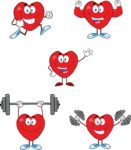 If you constantly work out to a max you are exposing yourself to chronic overwork where too high intensity, or volume, beats down on the body. Overtraining is a result of not knowing how to listen to your body and leads to a number of health issues from injury to depression. You need to respect the body need for rest, recovery and muscle regeneration.
If you constantly work out to a max you are exposing yourself to chronic overwork where too high intensity, or volume, beats down on the body. Overtraining is a result of not knowing how to listen to your body and leads to a number of health issues from injury to depression. You need to respect the body need for rest, recovery and muscle regeneration.
Exercise Is Addictive
We all know how great it feels after a real workout – so much better than drugs, drinks and comfort food. The high you feel can easily lead to addiction. Exercise addiction is a serious form of overtraining with bad health implications.
If you are new to fitness it can be easy to overtrain. You won’t realize what is happening unless you know how to read the signs. The mind-body response to sports injuries and overtraining has a bigger impact than you think. One of the worst effects of overtraining is catabolism, which is caused by a hormonal imbalance. Not knowing what a catabolic state means can have a drastic impact on your overall health, and lead to the absolute reverse of what exercise is meant to be.
Overtraining: The Destructive Catabolism
The concept of catabolism is often a mystery to many fitness fans. If you feel that you are plateauing or even decreasing in performance you might be overtraining and on the way to a catabolic state.
 The destructive catabolic state occurs primarily due to the hormone cortisol. This steroidal hormone is naturally released by the adrenal gland during states of high physical and mental stress. While it is a completely normal function of the body, excess cortisol release can have a drastic negative impact on the body. Cortisol primarily harms the body in three ways:
The destructive catabolic state occurs primarily due to the hormone cortisol. This steroidal hormone is naturally released by the adrenal gland during states of high physical and mental stress. While it is a completely normal function of the body, excess cortisol release can have a drastic negative impact on the body. Cortisol primarily harms the body in three ways:
- Stops your progress as it breaks down tissues instead.
- Converts muscles to fat
- Reduces your immune resistance and increases irritability, anxiety, and depression.
The most common cause of excess cortisol release in physically active individuals is lack of rest.
Tip: If you like articles about fitness, health, lifestyle changes – get inspired every week:
Overtraining: Muscle and Fat Burn
Workouts concentrate on maximizing efforts to build lean muscle mass. A properly designed training plan includes a rest between sets and recovery days. Many recreational fitness enthusiasts often put their bodies through too much. A catabolic state harms the body and by not resting, you risk health implications.
 The process of energy burn – or metabolism – is actually more correctly defined as the building (anabolism) and breaking down (catabolism) of chemical processes.
The process of energy burn – or metabolism – is actually more correctly defined as the building (anabolism) and breaking down (catabolism) of chemical processes.
Your body weight is a result of catabolism minus anabolism. In other words, the amount of energy we release into our bodies (catabolism) minus the amount of energy our bodies use up (anabolism).
If we enter a catabolic state too much energy and cortisol is released into the body system. The cortisol starts its destructive journey, and the excess energy is stored either as fat or glycogen (stored as carbohydrate mostly in the liver, and also in the muscles).
The main message to get across to yourself is that if the amount of training continues to exceed the rest period, your performance will plateau and decline.
Overtraining: Why Do You Exercise?
Excess exercise is as bad for your health as too little. When you start to exercise you want to get toned, lose weight and get healthier. Once you have reached a match weight and developed muscle you want to maintain the fitness.
This is the stage where overtraining can become an issue as the real fitness motivation has to re-evaluated. It can no longer be about losing weight, but rather about maintaining a healthy balance.
For the non-athlete finding, a balance is key to good health. A healthy fitness regime will respect the need for the human body system to rest and recover. This also means feeding it clean, healthy food. This will result in a healthy lifestyle without the fatigue of overworking.
When you exercise you build muscle. Muscles weigh more than fat, so staring oneself blind on the scales is detrimental. Many think that exercise will always provoke a downward weight trend, but after a while, this will stop. You will experience an increase as you build more muscle, however, your overall body fat percentage will get lower. Proper measurement of what you should weigh comes from looking at a combination of BMI and overall body fat percentage.
Tip: Follow The GOODista for fitness, wellness, and energy inspiration. Lifestyle changes you can do:
Overtraining: Rest, Recovery and De-Training
We exercise to gain and maintain health. We also want to perform and see positive changes. While goals are great, the magic formula between rest and workout has to be respected as the performance otherwise drops or declines. Some ask themselves why they are not getting results – despite all the hours they put in.
To see improvement in strength, flexibility, and fitness you must include rest, recovery, warm up and cool down stretches, proper nutrition, water, and a varied training programme.
Recovery time is as important as the actual workout, as is sleep. Athletes know this, but recreational fitness fans can have a hard time to find a healthy balance.
Gain Strength With Rest
It is outside of running tracks and gyms that muscles form and gain strength. Strength training and intense aerobic activity lead to microscopic tearing in the muscle fibers, and the muscles cannot heal and grow without proper rest. Research shows that excess cortisol levels are released in the body after an hour of exercise, which is why limiting sessions are advisable.
To be fit you need fuel. A clean, healthy diet that gives you energy for maximum performance. This book: Food For Fitness by Anita Bean is a great one with recipes, tips, and real nutrition advice.
The workout should not exceed to rest time. Understanding the importance of both in a healthy fit body is what brings a healthy balance and real fitness.
The recommended time limits:
- Recovery after Intense Workout: 48 hours.
- Length of Workout: 45 – 75 minutes depending on intensity.
- Rest Days / Week: Min 1 Day
- Periodic Rest: Every 8 Weeks for 1 week.
The most beneficial exercise plans combine aerobic exercise with anaerobic training. Weight training builds up the muscle, allowing the body to form more muscle mass and thus effectively burn more calories throughout the day. High-intensity cardiovascular or aerobic exercise burns fat while strengthening the heart. Depending on your individual exercise goals varying between intensity, types of training and volume will give results. This can be adjusted to weekly varied workout routine where you need 1 – 2 days full rest (no exercise at all!). After a continued cycle of training and rest days, you will need a recovery / de-training week to increase performance even further, and keep you, far fitter.
Overtraining: Health is Wealth
A good training plan will include walks, active recovery, high and low-intensity workouts and moderation in volume. Are you doing this, or might you be doing too much?
If you think you might be overtraining, check out Part 2: 10 Symptoms of Overtraining and Recovery Tips to get your fitness back on track, without the pains of destructive catabolism and excess exercise pains.
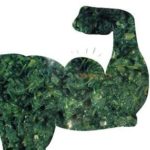 The way forward is to understand your body’s signals and avoid overtraining through a healthy balance. What you get in return is real wealth in the form of good health. Exercise lowers risk of developing numerous health conditions; a high metabolism that naturally burns which keeps your weight in check; a decrease of stress hormones which builds resistance and relaxation ability; better sleep; increased energy and overall you will Feel, Be and Do Good.
The way forward is to understand your body’s signals and avoid overtraining through a healthy balance. What you get in return is real wealth in the form of good health. Exercise lowers risk of developing numerous health conditions; a high metabolism that naturally burns which keeps your weight in check; a decrease of stress hormones which builds resistance and relaxation ability; better sleep; increased energy and overall you will Feel, Be and Do Good.
Recommended and Related:
- Working Out for 45 minutes Then Stop It – exercise.com
- 12 Signs You’re Overtraining – mensfitess.com
- Catabolism and Anabolism – medicalnewstoday.com
- What Does Active Recovery Really Mean? – breakingmuscle.com
- Exercise Addiction – breakingmuscle.com
- How To Assess Body Composition – sport-fitness-advisor.com
- Running: The Line Between Hard and Over Training – runnersconnect.net
- 5 Rules of Building Strength – bodybuilding.com




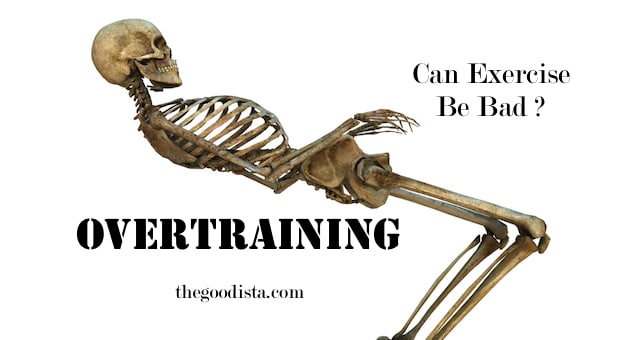

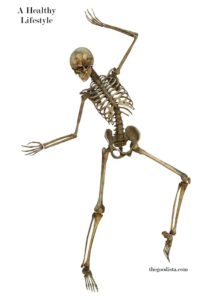

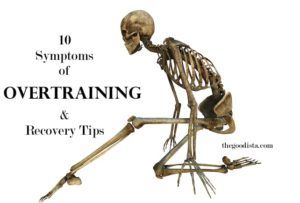




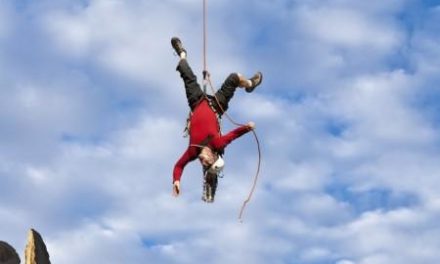

You are so right, everything in moderation! I feel fortunate to have found my pilates class, and truly enjoy my two varied sessions a week. Walking to and from the sessions, in all some 12 kilometers, is another treat. Plus all my daily walks, swimming….I guess I also have to start building more muscle strength by going to a gym, Indeed, sincere thanks!
Thanks for inspiring others to a healthy, active life. May you continue in this way, and adding strength training will add even more to your fitness. Welcome back to The GOODista anytime for articles about lifestyle changes to Feel, Be and Do Good.